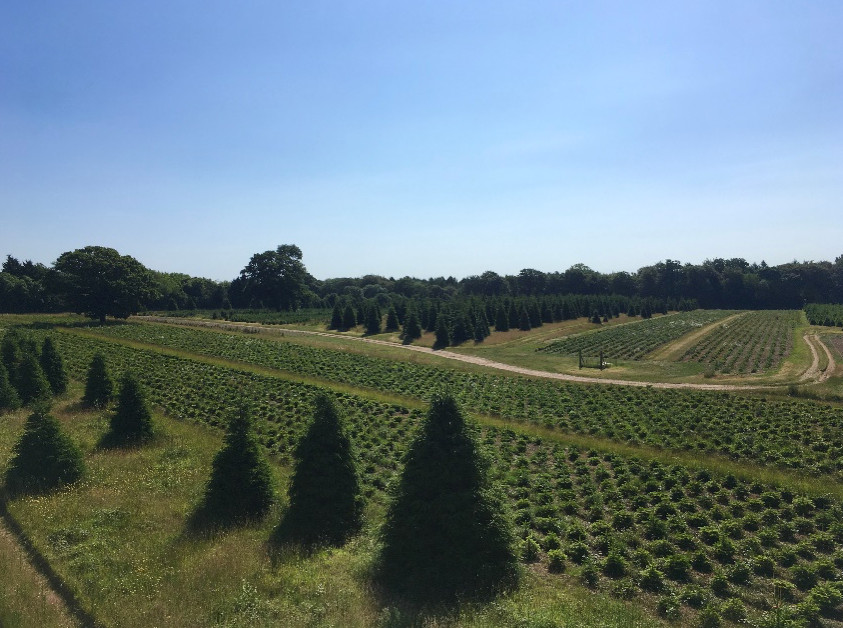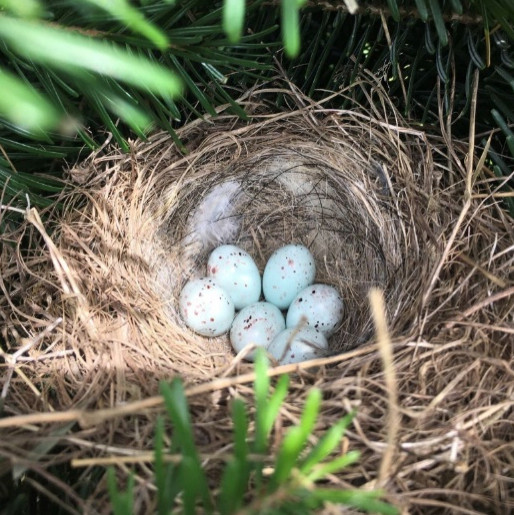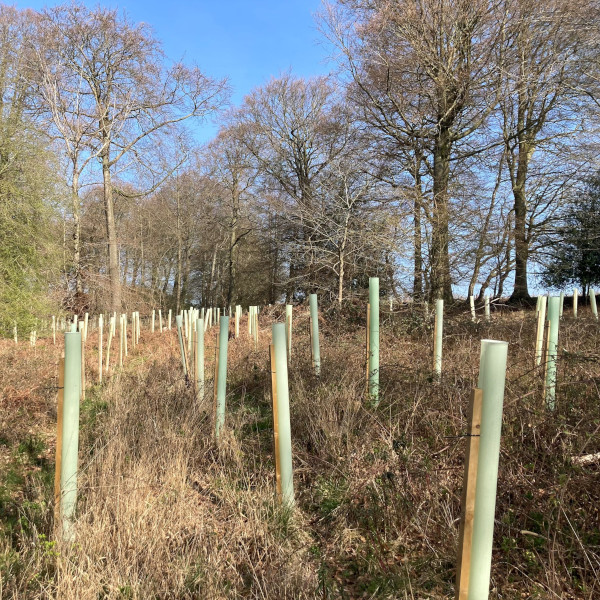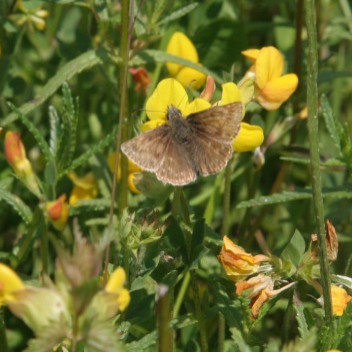Farming Sustainably
With increasing environmental awareness, many of us are looking to make ‘greener’ choices in day to day living, and this may include your Christmas tree. We’ve compiled some information below on why real trees are better for the environment that artificial ones. You may also be interested to learn about some of our own farming practices and work on biodiversity:
CARBON
Trees grow by taking ‘greenhouse gas’ carbon dioxide out of the atmosphere. A Christmas tree-sized conifer stores carbon dioxide and carbon represents about 50% of the dry weight of the wood in a tree at harvest time. If the tree is composted, then that carbon is sequestered back into the soil and not released into the atmosphere.
Researchers at Lund University and Stockholm University in Sweden discovered that spruces, pines, and firs are also exceptionally adept at absorbing methane, a greenhouse gas believed to be about 25 times more potent than carbon dioxide.

The energy used and pollutants released during the manufacture of an artificial tree, are harmful to the environment. Most artificial trees are manufactured in China, therefore there is also a considerable carbon footprint from the shipping of the tree to the UK, then on to the retailer, before it is even sold to you the customer. Not to mention the fact that artificial trees are not biodegradable or recyclable and will end up in landfill.
Buying a real tree and buying it locally from a British grower, not only keeps emissions to a minimum, but can actually help with carbon capture.

SUSTAINABLE CROP
The trees we sell are not wild, so harvesting them is not de-forestation. The trees are planted by us as a crop and for every tree harvested another is planted… otherwise we would go out of business in the first year! In each of the last few years, we have cut approximately 14,000 trees and planted 17,000 – 17,500 trees.
CLEAN AIR
Christmas trees release oxygen when they grow. 1 acre of Christmas trees provides enough daily Oxygen for at least 18 people. This is currently the subject of a study by the British Christmas Tree Growers Association.
WILDLIFE
British Christmas tree plantations have been found to support biodiversity according to the first ever study of its kind undertaken in the UK. Commissioned by the British Christmas Tree Growers’ Association, the study scrutinised a number of sites across the UK. Well-managed plantations were found to support insects, arachnids, both native and migratory birds, as well as species of conservation concern such as red squirrels and polecats. Here at The Tree Barn, we frequently find Woodcock, hares and Yellowhammers (a ‘red list’ species) in our tree plantations.
OUR FARMING PRACTICES
Tree Recycling:
We are a district council drop-off point for Christmas tree recycling. After Christmas you can drop your tree off at The Tree Barn and it will be collected by the council for composting. For more information, please visit our Tree Recycling page.
Moving Away from Chemicals:
We are part of a BCTGA trial looking at how companion crops can reduce the need for herbicides on Christmas tree plantations.


Wildflower Meadows:
30 years ago, Andrew turned over 100 acres of agricultural land to wildflower meadows. Historically a mixed dairy and arable farm, this was only possible after the farm diversified into Christmas trees, which do not require great acreage.
The wildflower meadows are now so well established that recent surveys show there are over 100 varieties of grasses and flowers there, including 9 species of wild orchid (some of which we have worked hard over a number of years to introduce ourselves by spreading seed with a license from Natural England).
We owe a huge debt of thanks to Marek Nowakowski for his invaluable advice in this field over many years, and thank you also to the late Terry Swainbank for his assiduous work with us on orchids.
Woodland:
Andrew planted 3 new woodlands on the farm in 1996. We now manage 350 acres of woodland on the farm, and have introduced bird boxes for owls and kestrels, and a protected habitat for hazel dormice. In 2022 we planted 6,000 trees to replace the diseased Ash trees.
Hedgerows:
We have introduced 2 miles of hedgerows and established an equal length of field margins for grass and wildflowers. Every field on the farm has a margin.


Wildlife:
Thanks in large part to the wildflower meadows and hedgerows, the farm boasts a high number of butterfly and bird species. Approximately 30 native butterflies have been found on the farm including Purple Emperor, Dark Green Fritillary and Small Blues. Surveys indicate we also have 67 bird species on the farm, including 24 red/amber list species.
Renewable Energy:
Greenfield Farm was the first farm in the country to install photovoltaic panels. The bank of panels on our Tree Barn roof supply the farm with electricity and feed into the National Grid.
